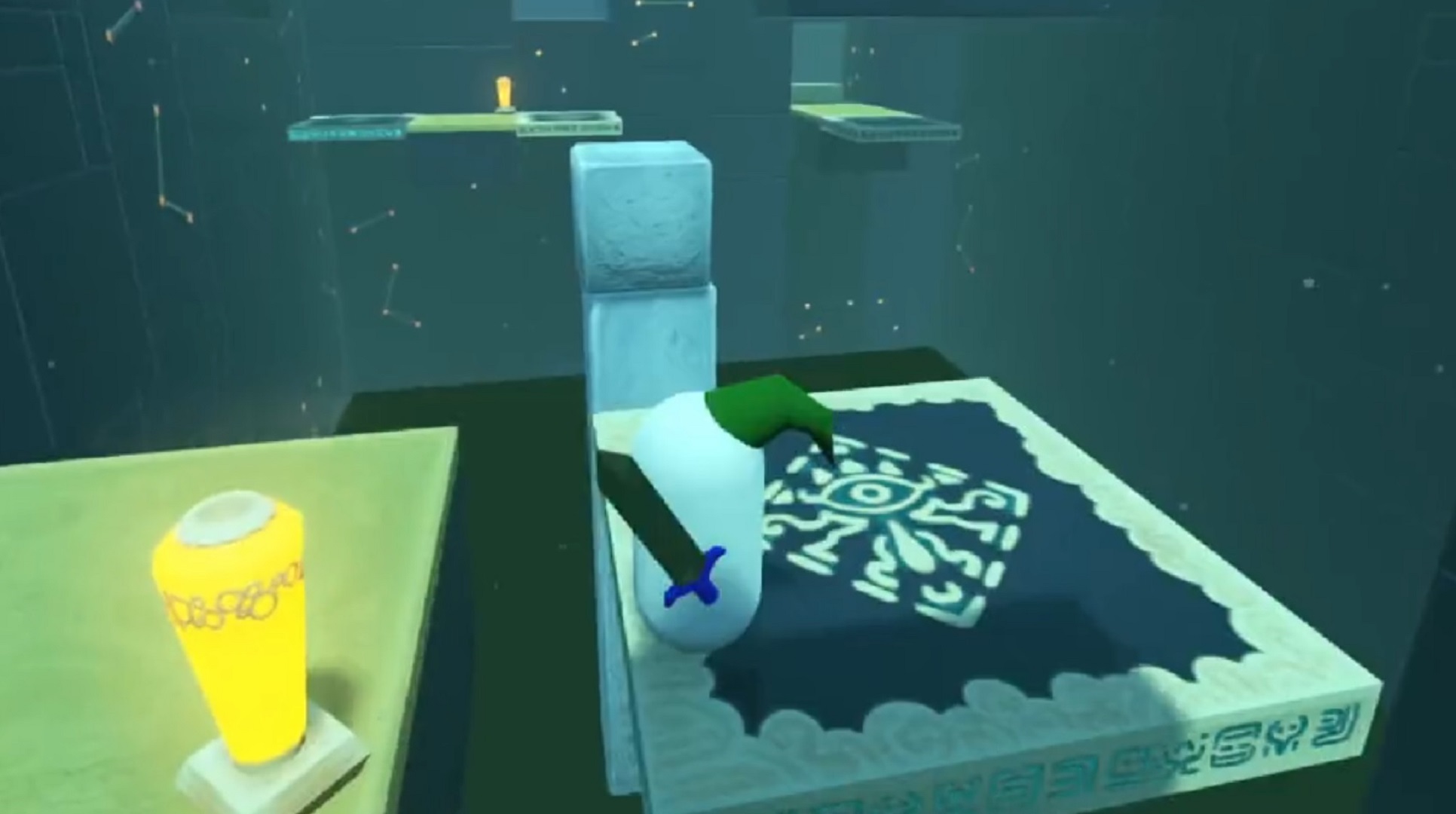Meet the Legend of Zelda fan who spent 7 months making a Breath of the Wild clone because they couldn't get a Switch
No Switch? No problem

One committed Legend of Zelda fan has remade the game, despite never having played the original.
Indie dev Nagi is a big fan of The Legend of Zelda but couldn't get a Nintendo Switch to play Breath of the Wild, so instead they spent seven months making a clone game inspired by Nintendo's open-world epic.
Nagi (known as _bhgt_ on Reddit) posted a short video of their self-described "BOTW clone" earlier this month, showing off an impressively built temple that leverages Link's three core Sheikah Slate runes: Stasis, Magnesis, and Cryonis. Using the free game creation software Godot, Nagi recreated all of these abilities along with other Breath of the Wild temple mechanics and assets like the rune selection bar. The whole thing looks incredibly convincing in motion, even the Fall Guys-esque Bean Link. "I kept the player in the default capsule shape for comedic reasons," Nagi tells GamesRadar+.
"Initially this was meant to be a simple weekend project to recreate just the magnesis ability," Nagi says. "However, as I got more interested, I ended up spending seven months in total. Being kinda poor, I can't afford a Nintendo Switch, but I do love watching videos about the Legend of Zelda games. This, along with the prospect of learning more about game development, motivated me to create the project."
Nagi's Breath of the Wild clone currently consists of one original shrine. After watching several playthroughs of Breath of the Wild's shrines, they pulled out and tweaked their favorite puzzles and mechanics to make a shrine of their own that's "a bit longer and more complicated."
Stasis, Magnesis, and Cryonis work exactly as you'd expect here, and Nagi's shrine puts them to good use. It took quite a bit of work to get to that stage, though.
90% COMPLETE!All left is some polish, then straight off to record the devlog!#indiedev #gamedev #GodotEngine #Godot #Zelda #zeldabreathofthewild #BOTW #screenshotsaturday pic.twitter.com/RjL5mFiBoNNovember 13, 2021
"While the other two were a breeze to create, I had issues with Cryonis," they explain. "Most of it is to blame on my poor knowledge of vectors. I spent a long time figuring out the correct angle for the ice blocks on angled surfaces."
Sign up to the GamesRadar+ Newsletter
Weekly digests, tales from the communities you love, and more
"I've only used Unity other than Godot," Nagi says of their game dev background. "Godot takes a ridiculously short time to start up, and the rest of the engine is quite fast for developing games. I've even had no instances of the engine crashing or my project getting corrupt. The same can't be said for Unity. All this is not to say that one engine is better than the other; they're both great engines with their own workflow and quirks. So, it just boils down to what you as a developer are comfortable with."
Nagi says their Breath of the Wild clone game is around 90% complete at this point, though they're still planning to add in an HP system. However, given Nintendo's history of shutting down fan games, they aren't planning on publishing the project, so it will remain an educational passion project, not to mention some of the coolest self-assigned homework we've ever seen.
Meanwhile, over in Hyrule, Breath of the Wild players just discovered that torches lit with blue fire will send village kids into an excited frenzy.

Austin has been a game journalist for 12 years, having freelanced for the likes of PC Gamer, Eurogamer, IGN, Sports Illustrated, and more while finishing his journalism degree. He's been with GamesRadar+ since 2019. They've yet to realize his position is a cover for his career-spanning Destiny column, and he's kept the ruse going with a lot of news and the occasional feature, all while playing as many roguelikes as possible.


